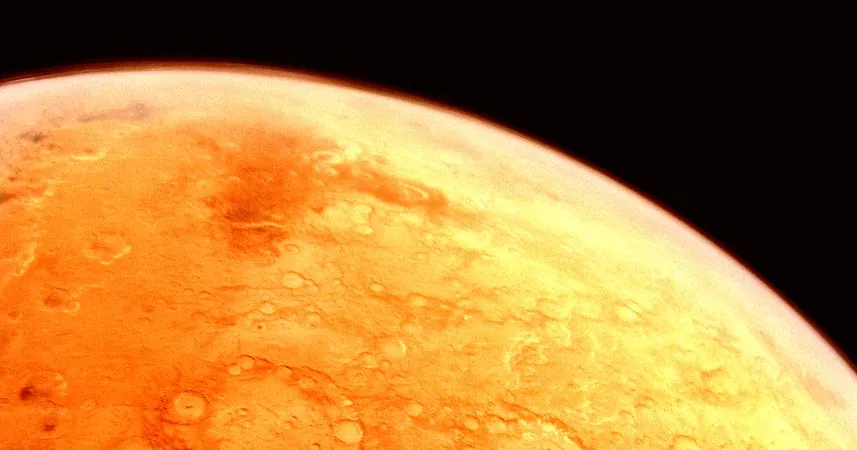
Mars' Surface Might Hold the Key to Rocket Fuel, Say MIT Researchers
2024-09-26
Author: Wei Ling
What if we could harvest rocket fuel from Mars? According to a groundbreaking study from MIT, we may be closer to making that a reality!
A Planet Once Full of Life?
Mars, known as the Red Planet, is often seen as a desolate, barren landscape now, but scientists believe it once thrived with liquid water systems—oceans, rivers, and lakes that required a thick atmosphere to support life. After billions of years, however, that atmosphere seemingly vanished, leading researchers to ask, what happened?
In a recent study published in *Science Advances*, MIT scientists propose that the remnants of Mars’ atmosphere are not lost but instead entombed within sedimentary rocks on the planet's surface. Their research indicates that up to 80% of Mars' ancient carbon dioxide could be trapped in carbon-rich organic compounds found in these rocks.
Could We Fuel Mars Missions with Martian Resources?
The most exciting aspect of their findings is the potential to extract this trapped carbon and convert it into methane, a viable rocket fuel. Professor Oliver Jagoutz, a geologist at MIT, emphasizes the relevance of this discovery: “Based on our findings on Earth, we show that similar processes likely operated on Mars, which means that significant amounts of atmospheric CO2 could have been transformed into methane and stored within clays.” This methane could serve as an essential energy source for future missions, making trips to and from Mars more feasible.
The Role of Smectite
The research highlights smectite, a particular clay mineral, known for its capacity to absorb large amounts of carbon. On Earth, these clays have formed through tectonic activity, capturing and storing carbon dioxide over millions of years. Given the prevalence of smectite on Mars, scientists theorize that a similar process may have occurred, leading to the preservation of the planet’s atmosphere.
Co-author and MIT planetary sciences PhD Joshua Murray explains that approximately 3.5 billion years ago, when water flowed freely across Mars, a massive collection of CO2 interacted with the rocks: “At that time, CO2 was pervasive, infiltrating every corner, and the water that was seeping through was saturated with CO2,” he said. He emphasizes that smectite clays have an enormous capacity for carbon storage, leading them to analyze how much methane could still be locked away in the Martian clays today.
Hidden Resources of the Red Planet
Murray intriguing points out that Mars’ missing atmosphere could be quietly concealed within the planet's geology, waiting for humanity's exploration and exploitation. This revelation presents an extraordinary opportunity not only for scientific understanding but for practical applications in future space travel.
Future Prospects
As we continue to analyze the Martian landscape, this research paves the way for innovative technologies that may one day allow us to sustainably fuel our ambitions for exploration beyond Earth. With scientists proposing low-cost terraforming plans for Mars, the dream of habitable life on the Red Planet could be just around the corner!
Stay tuned for more exciting developments in Martian exploration!





 Brasil (PT)
Brasil (PT)
 Canada (EN)
Canada (EN)
 Chile (ES)
Chile (ES)
 Česko (CS)
Česko (CS)
 대한민국 (KO)
대한민국 (KO)
 España (ES)
España (ES)
 France (FR)
France (FR)
 Hong Kong (EN)
Hong Kong (EN)
 Italia (IT)
Italia (IT)
 日本 (JA)
日本 (JA)
 Magyarország (HU)
Magyarország (HU)
 Norge (NO)
Norge (NO)
 Polska (PL)
Polska (PL)
 Schweiz (DE)
Schweiz (DE)
 Singapore (EN)
Singapore (EN)
 Sverige (SV)
Sverige (SV)
 Suomi (FI)
Suomi (FI)
 Türkiye (TR)
Türkiye (TR)
 الإمارات العربية المتحدة (AR)
الإمارات العربية المتحدة (AR)